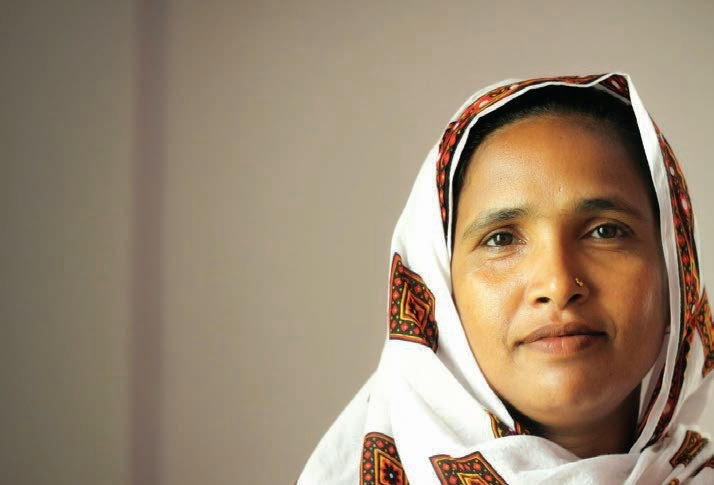According to market research conducted by Dutch-Bangla Bank Limited (DBBL) before it started its mobile banking initiative, just 13 percent of the 160 million people in
Bangladesh had bank accounts. The reason was a lack of branch offices in rural areas, where the majority of the population lives. Yet within the unbanked 87 percent,
which is more than 139 million people, 50 percent had mobile phones. Again, access was the key. Mobile operator agents
are widely distributed, the devices themselves are affordable and service coverage is constantly expanding.
Similar numbers are common in developing nations all over the world for the same reasons, which is why the opportunity for banks to bring basic financial services to the unbanked via the mobile channel is so big.
In mid-2011 DBBL launched a solution for customers to manage money with their mobile phones, depositing and withdrawing funds as well as conducting other financial
transactions. In addition to making banking more convenient and accessible for customers, the mobile channel provides a low-cost methodology for DBBL.
Why Mobile Makes Sense
Technology is a key business driver for DBBL, established in 1996 as a joint venture between local shareholders and Dutch company FMO. The bank focuses on financing high-growth manufacturing industries in Bangladesh. It has the largest ATM network and electronic processing system in the country, and it is the largest corporate donor. DBBL has won numerous international awards because of its unique approach as a socially conscious bank.
Combining its philanthropic mindset and willingness to put new technology to work, DBBL understood that deploying a mobile banking solution would be much less costly than expanding services through new branch locations or even ATMs.
Opening branches in the country’s rural areas is difficult and expensive. Each new branch requires the approval of the Central Bank of Bangladesh, which allows only 5 to 10 new branches per bank, per year.
New branches also require a staff of expert bankers, and generally, expert bankers do not want to work in rural areas. What’s more, rural branches do not take in enough deposits or provide enough loans to make them profitable.
ATMs seem like a better fit for rural areas—and there is no restriction on number—but they still require continuous maintenance, cash restocking from the nearest branch, rent,
electricity and security. Without a network of branches in rural areas, ATMs are not practical either.
For many years, these complications left the rural population cut off from the traditional banking system. That is changing now, however, as mobile phones are providing access and banking opportunities to people who have never had them.
Tapping into an Existing Network
Mobile phones are not the only access point. DBBL saw an opportunity to leverage a network that already exists throughout rural areas: mobile operator agents. These agents are generally small shop owners or retailers. As they are already distributed throughout the country, they help new customers open accounts and check account balances, as well as provide cash-in/cash-out services. Customers use their phones to authorize the transactions.
Account holders can arrange to have employers or the government deposit payments to their accounts, or mobile wallets, and transfer money to their relative’s wallets. The accounts remain secure by requiring personal identification number (PIN) access, and customers can change their PINs from their mobiles. The bank’s plans for the next phase of services include mobile airtime top-up, merchant payment, ATM withdrawal and micro financing—all using consumers’ mobile devices.
Benefits Beyond Banking
Existing and new customers have adopted mobile technology quickly, and a large segment of people that lived too far away from banks to open accounts can now conduct all types of banking transactions. However, DBBL’s mobile solution promises to deliver more than just banking. For people who have never had access to financial services, the numbers show that—as deposits are greater than withdrawals—simply having a bank account helps develop savings habits.
For illiterate people, who cannot sign their name to paper cheques, the mobile system provides a workaround whereby customers type their PIN into the phone. If the combination
of the PIN and the mobile number is correct, DBBL releases the money to the agent so he or she can pay the customer.
The system also allows local and international money remittance, so Bangladeshi expatriates can send money home. The receiving family member can withdraw funds at the nearest participating retailer or cash point.
An Open Network
DBBL’s service will be available on all mobile devices with subscription to any of the six mobile operators of Bangladesh. This openness is key to being able to reach the maximum number of customers, as the business model depends on serving the widest base of the economic pyramid.
DBBL now has a business channel that is much less costly to support than building branch offices and installing ATMs. This
tremendous innovation gives the bank a competitive advantage and ushers in a new era of banking in Bangladesh.
DBBL hopes that banks throughout the developing world will use its mobile banking initiative as a model. Mobile money can increase financial inclusion and bring positive change to economies throughout the world.
The writer: Abul Kashem Md. Shirin worked for the Bangladesh Sugar and Food Industries Corporation for 10 years and served as head of IT at BASIC Bank, Bangladesh for eight years and head of IT at DBBL for ve years. Since 2008 he has been the deputy managing director at DBBL.
Published in the Sybase Mobile Commerce Guide - 2012
